There can be your advertisement
300x150
Lace House on Leningradsky Prospekt: The Embroidered Legend of Soviet Architecture
The Incredible Legacy of Moscow Architecture
In the panoramic view of Moscow's buildings, there are structures that stand out not only for their historical significance but also for their extraordinary aesthetic appeal, which anticipated the times. One such architectural masterpiece is the famous 'Lace House' on Leningradsky Prospekt, known for its unique facade resembling delicate lace made of concrete.
Interesting Facts
The prototype for the lace-like grille was inspired by architectural elements seen by Burkov during his trips to Italy;
More than 10 prototype samples were made to create the ideal pattern of the grille;
The garden in the courtyard of the house, designed simultaneously with the building, has been preserved;
The thickness of the concrete elements of the grille is only 5-7 cm, which was a technological achievement for its time;
Burkov developed a special technology that allowed avoiding cracking of thin concrete elements during Moscow's harsh winters.
 Photo: kulturologia.ru
Photo: kulturologia.ruHistorical Context and Creation
The Lace House (official address — Leningradsky Prospekt, 27) was built in 1939-1940 based on a design by the prominent Soviet architect Andrei Konstantinovich Burkov in collaboration with Boris Nikolaevich Blokhin. The building was constructed as a residential house for employees of the People's Commissariat of Aviation Industry of the USSR.
This period in Soviet architecture is marked by the transition from constructivism to neoclassicism, and Burkov's work became a kind of bridge between these two directions, uniting functionality and decoration. Andrei Burkov was not only a talented architect but also an artist who studied art in Italy and France, which reflected in his unusual approach to design.
Architectural Features
The main highlight of the building is its famous facade facing Leningradsky Prospekt. It is adorned with an intricate concrete grille that serves several functions:
Protects apartments from noise of the busy highway;
Creates a play of light and shadow in interiors;
Ensures natural ventilation;
Serves as an aesthetic element, giving the building a unique appearance.
Structurally, the house is an eight-story building stretching about 150 meters. In addition to the lace facade, other interesting architectural elements include semicircular bay windows, balconies with elegant railings, and carefully planned proportions.
Special attention was paid to materials. Reinforced concrete was used for decorative elements, which at the time was an innovative construction material. Burkov experimented with technologies in search of the ideal balance between strength, plasticity, and aesthetics.
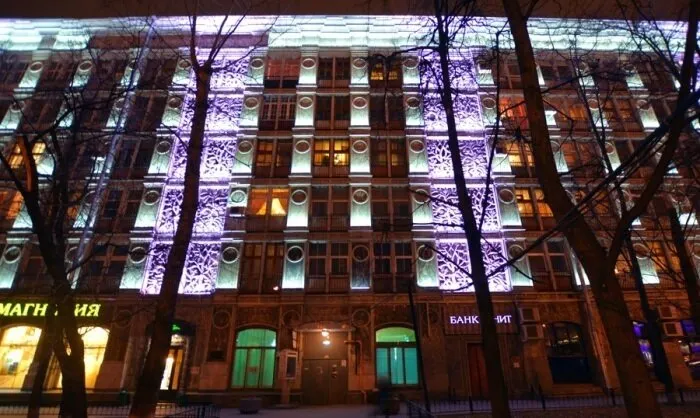 Photo: kulturologia.ru
Photo: kulturologia.ruInnovations and Technological Solutions
Andrei Burkov was not only an architect but also an innovative engineer. When creating the Lace House, he first applied several advanced technological solutions in the USSR:
Use of prefabricated concrete elements for decorative finishing;
Creation of special molds for casting concrete grids;
Application of a special concrete mix to increase its plasticity and durability;
Integration of functional elements (ventilation, sound insulation) into the decorative design.
According to accounts of contemporaries, Burkov personally supervised the manufacturing and installation of concrete elements, striving for perfect execution of his vision.
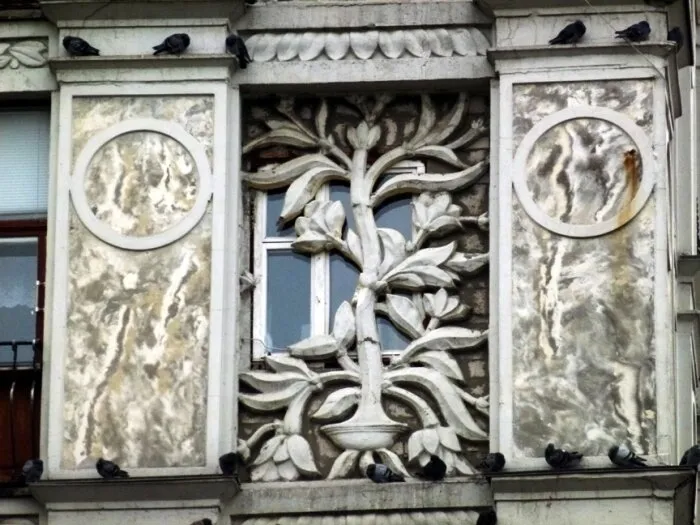 Photo: kulturologia.ru
Photo: kulturologia.ruLife in the Lace House
The apartments in the house were characterized by well-thought-out layouts and spacious rooms. Initially, they were inhabited mainly by people from the aviation industry, engineers, and constructors, as well as some members of the intelligentsia.
Among the notable residents of the Lace House over the years were:
Aviation constructor Semen Alekseyevich Lavochkin;
Writer and translator Arkady Steinerberg;
Actress Nina Arkhipova;
A number of high-ranking officials in the aviation industry.
Notably, many apartments in the house retained their original layouts, parquet floors, and even some elements of initial interior finishes — a testament to the high quality of construction.
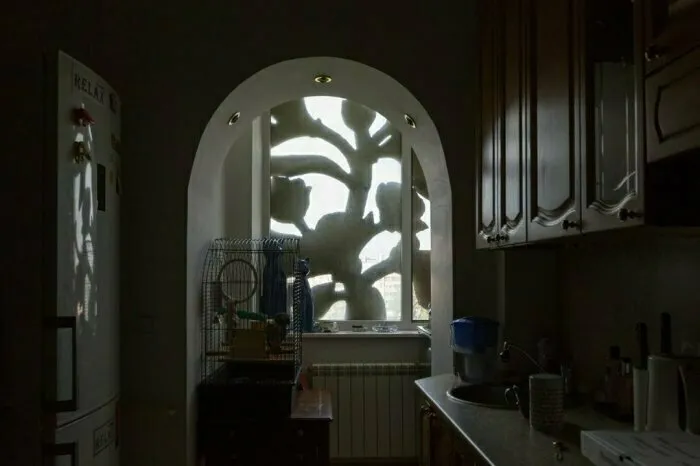 Photo: kulturologia.ru
Photo: kulturologia.ruFate of the House During the War and Post-War Periods
During the Great Patriotic War, the building was not damaged by bombing, although it was located near the front line during the Battle of Moscow. This can be seen as a fortunate coincidence that preserved this architectural masterpiece for future generations.
In the post-war years, the Lace House remained a prestigious residential building. In the 1970s and 1980s, partial reconstruction of engineering systems was conducted, but the facade and key architectural features were carefully preserved.
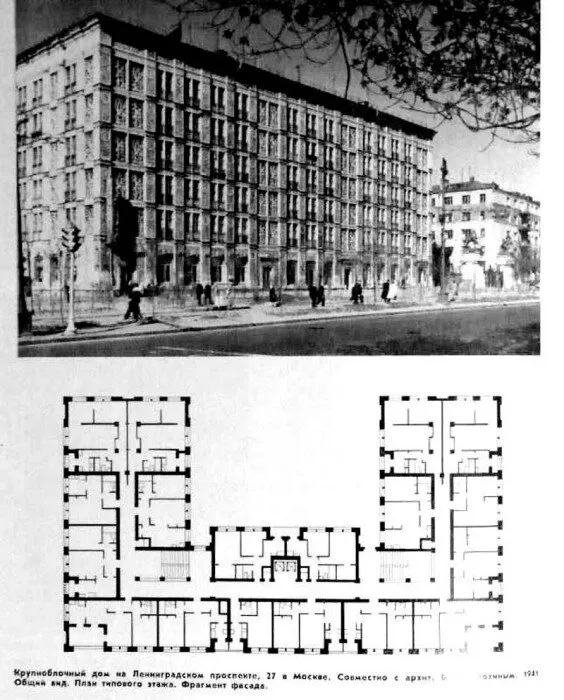 Photo: kulturologia.ru
Photo: kulturologia.ruCultural Significance and Recognition
Today, the Lace House holds the status of a regional cultural heritage object. It is regularly included in architectural guides for Moscow and serves as a popular subject for photographers and architecture enthusiasts.
Burkov's work received recognition not only in the USSR but also abroad. The Lace House is often cited in international studies on modernist architecture as an example of successful integration of functionality and aesthetics.
 Photo: kulturologia.ru
Photo: kulturologia.ruCurrent State
In the 2000s, the building underwent a comprehensive restoration, during which elements of the lace grille were restored, facades cleaned, and engineering systems updated. Thanks to this, the house today looks almost as it did at the time of its completion in 1940.
The Lace House continues to function as a residential building, and its apartments are highly valued on the real estate market not only due to the prestigious location but also because of the historical and architectural value of the building.
 Photo: kulturologia.ru
Photo: kulturologia.ruInfluence on Architecture
Burkov’s experiments with lace-like concrete elements had a significant impact on the development of Soviet architecture. In the post-war years, similar solutions were adopted in different cities of the USSR, although in a more simplified form.
The concept of using decorative concrete grids evolved further in the architecture of the 1960s and 1970s, especially in southern republics, where they also served a climatic function, protecting buildings from overheating.
The Lace House on Leningradsky Prospekt is not just a beautiful building but an important chapter in the history of Soviet architecture, demonstrating that even during periods of standardized construction, there was room for creative experimentation and individualized approaches. This architectural masterpiece continues to inspire Muscovites and visitors of the capital, remaining one of the most photographed buildings in the city.
Cover: kulturologia.ru
More articles:
 Cozy Evening Rituals for Stress Relief
Cozy Evening Rituals for Stress Relief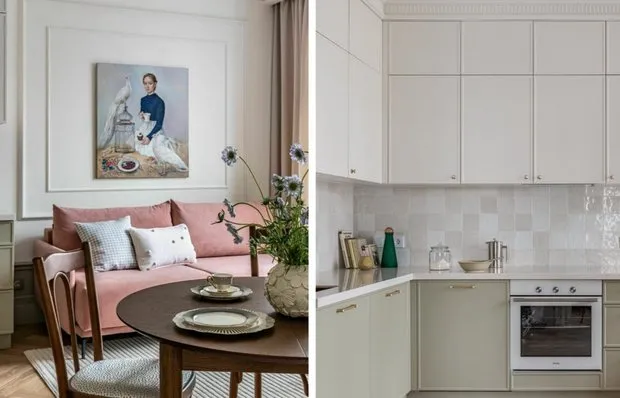 5 Design Solutions Found in a Transformed 75 m² Trash
5 Design Solutions Found in a Transformed 75 m² Trash Light Trash 65 m² Designer with Modern and Unusual Solutions
Light Trash 65 m² Designer with Modern and Unusual Solutions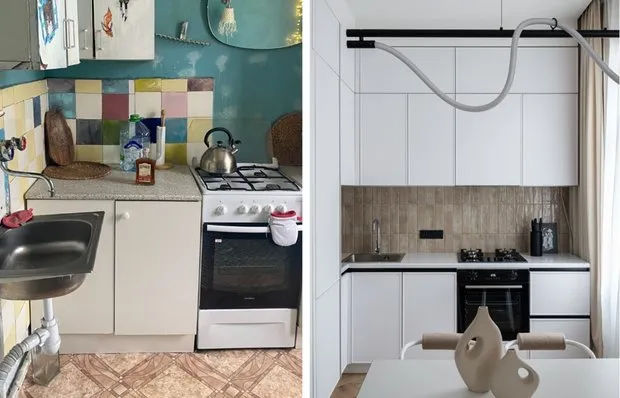 Before and After: How We Transformed the Kitchen in a Tiny Stalin-era Apartment
Before and After: How We Transformed the Kitchen in a Tiny Stalin-era Apartment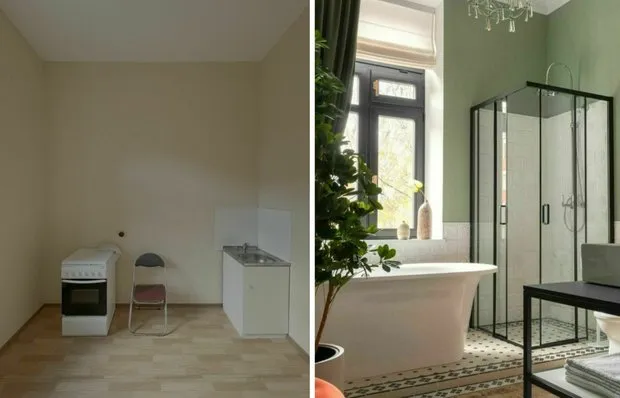 Idea for a 2-room apartment: moved the bathroom to the kitchen and it turned out great
Idea for a 2-room apartment: moved the bathroom to the kitchen and it turned out great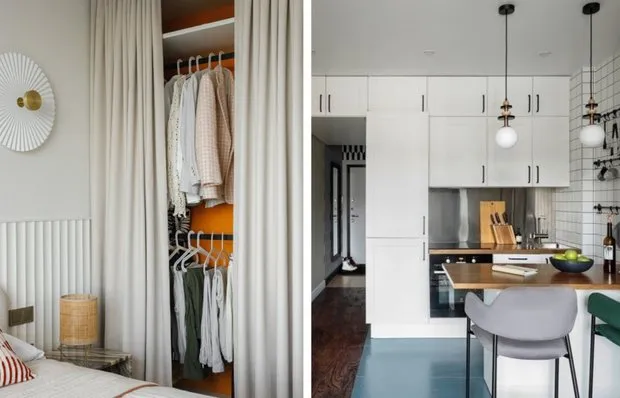 5 super simple storage ideas for small apartments you knew but forgot
5 super simple storage ideas for small apartments you knew but forgot How to Get Rid of Winter Depression: 7 Interior Changes That Will Lift Your Mood
How to Get Rid of Winter Depression: 7 Interior Changes That Will Lift Your Mood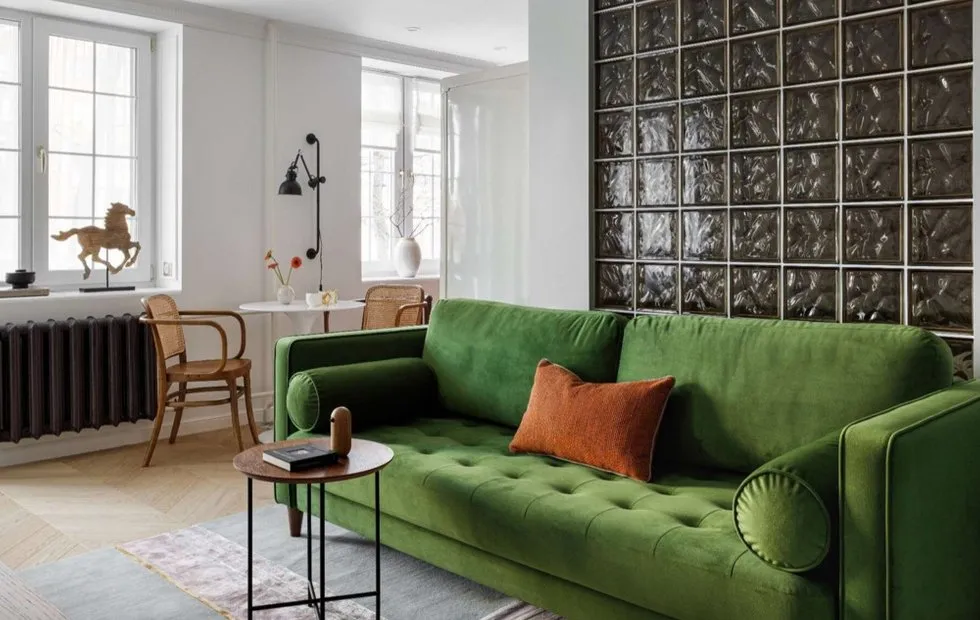 Designer in Shock: How to Renovate a Khrushchyovka and Save a Million
Designer in Shock: How to Renovate a Khrushchyovka and Save a Million